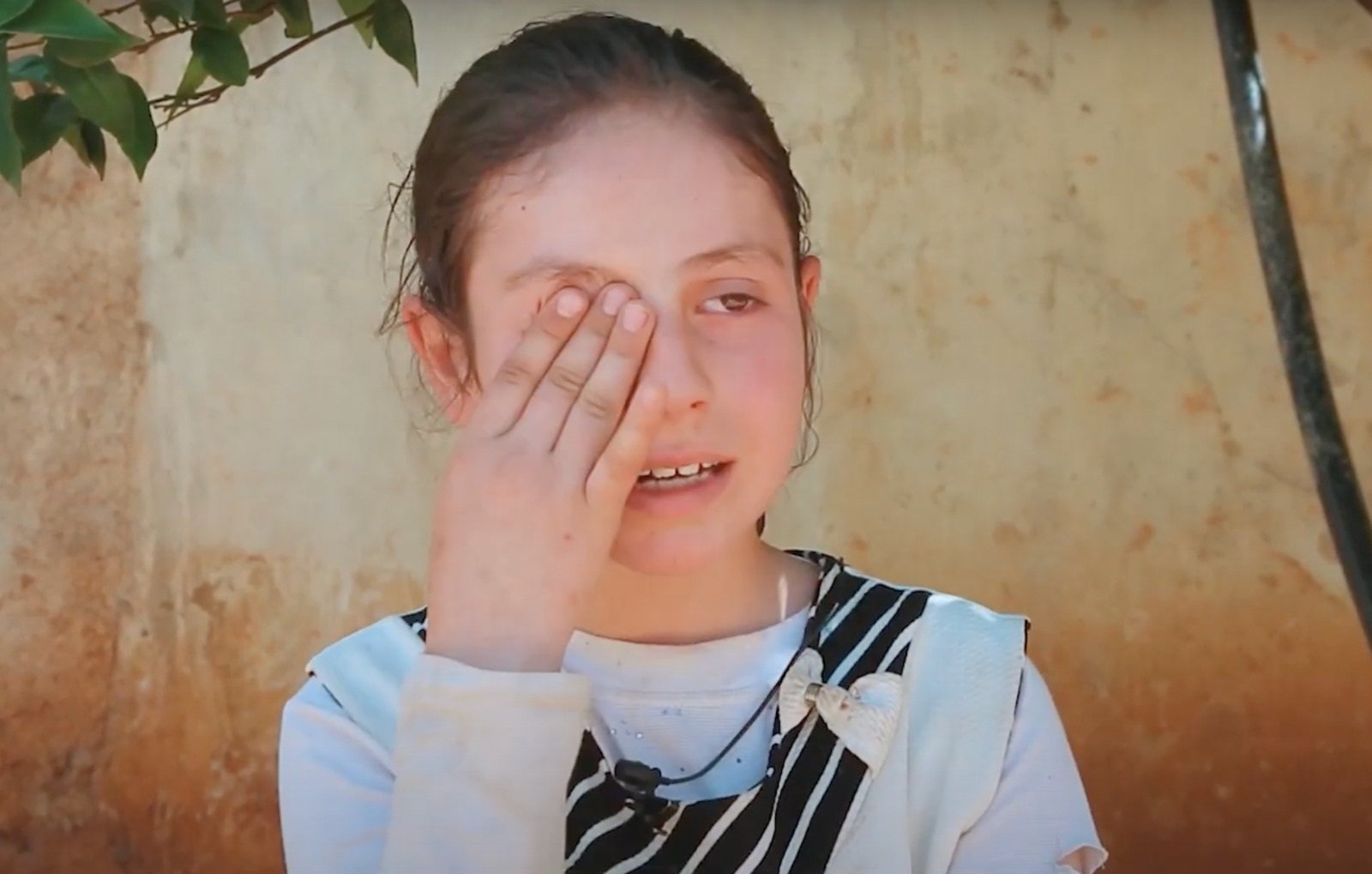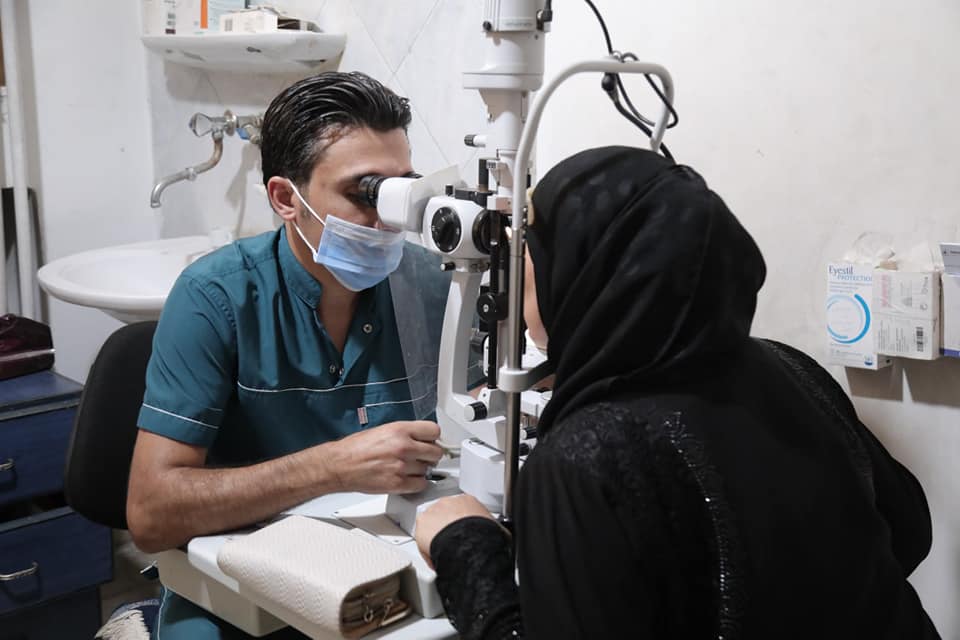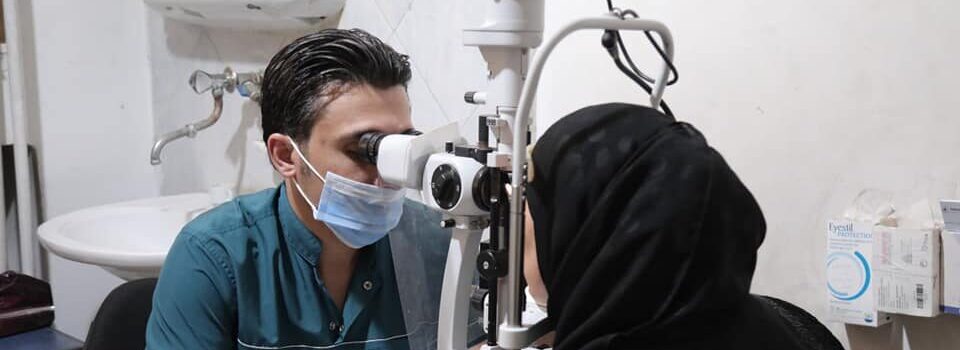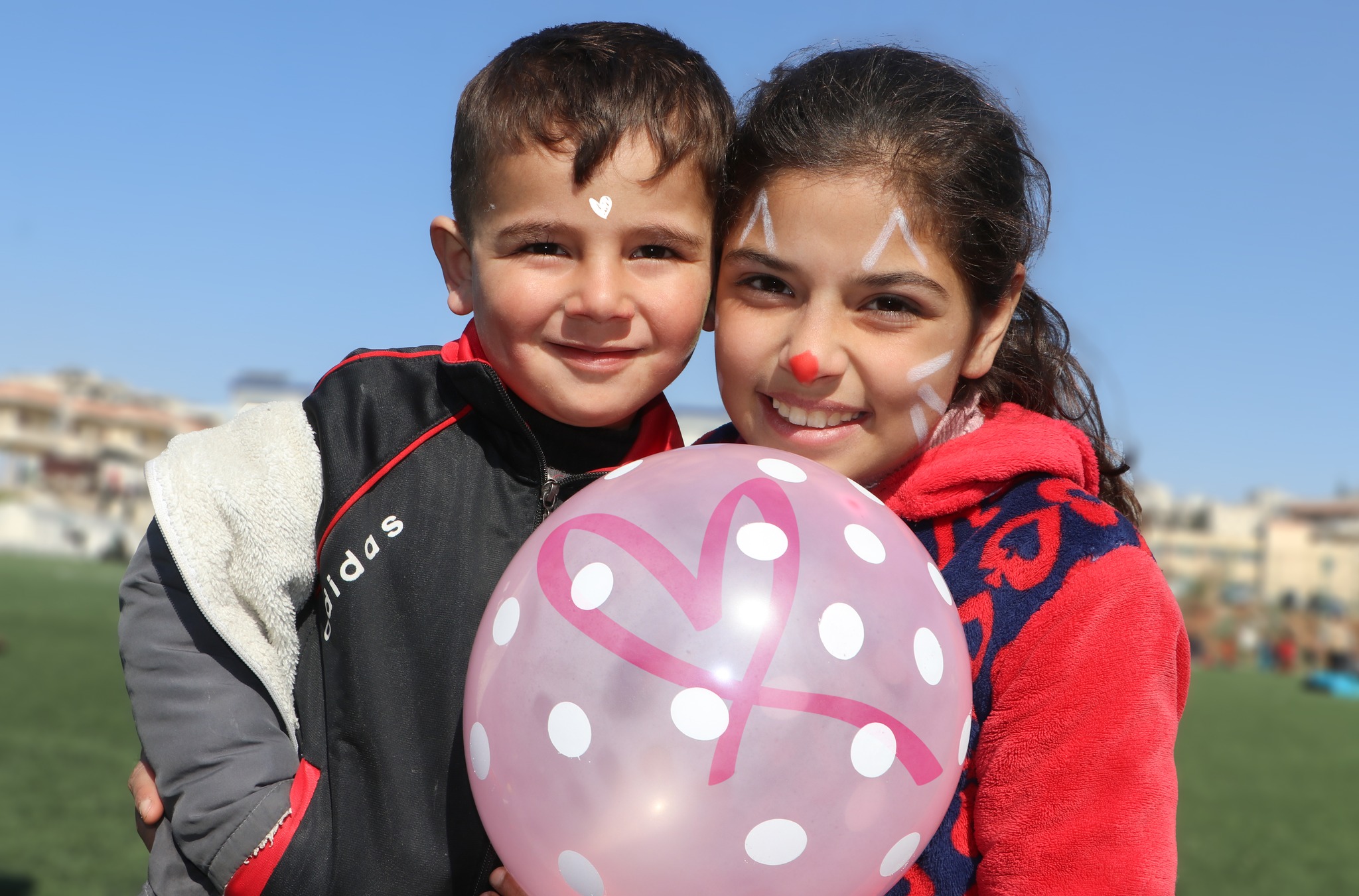Access to eye care is a fundamental right for humans everywhere. However, many Syrian refugees who are suffering from vision problems are at risk of vision loss due to poor medical facilities, absence of trained medical staff and lack of access to eyecare medicines and equipment.
Common vision problems among refugees
There are many vision problems that are prevalent among refugees and drastically affect their quality of lives, which include:
Amblyopia
Amblyopia – also called lazy eye– is a common type of vision problem that usually affects one eye, and it is less common in both eyes. Amblyopia is usually caused when there is failure in how the brain and the eye work together, in which case the eye would not be able to recognize the sight from one eye.
With time the eye relies on the other stronger eye, while the sight in the other eye weakens. The name lazy eye refers to the stronger eye which works better than the other weak eye.
This vision issue starts in childhood and affects up to 3 children in every 100 kids. However, early treatment can work well with lazy eyes and prevents long-term vision issues.

Blocked tear duct
The blocked tear duct occurs when the nasal passageways get blocked, leading them to have issues with draining tear liquid from the eye.
This could cause your eyes to be watery, irritated and itchy. Babies could be born with clogged nasal passageways. Blocked tear ducts might heal on their own or by surgery. Nevertheless, symptoms in most people disappear with the correct treatment.
Glaucoma
Glaucoma is a common vision condition which occurs when there is a problem with the optic nerves.
In other words, glaucoma happens when the optic nerves that connect the eyes with the brain get damaged.
This vision issue is mostly caused by fluid buildup in the front part of the eye causing a pressure inside the eye.
In the worst of cases, glaucoma might lead to loss of vision if not diagnosed and treated earlier. Although glaucoma affects all age groups, it is mostly common in adults between the ages of 70s and 80s.
Cataracts
Cataracts is a clouding that happens in the lens of the eyes. People who have cataracts have a vision similar to looking through foggy, frosty kinds of windows.
People who are suffering from cataracts find it hard to read, drive and lead a healthy, normal life. The vision problem of cataracts occurs with aging or an injury that affects the makeup of the eye tissues, causing a cloudy, hazy vision.
Cataracts might also be caused after a surgery or by medical conditions such as diabetes. In addition, long-term use of steroids’ medication might end up causing cataracts.
Corneal transplants
Corneal transplant is a medical operation that has to do with replacing the cornea with corneal tissue from a donor.
This kind of operation is also called keratoplasty.
The cornea is transparent and dome-shaped, and it facilitates the passage of light into the eye in order for the person to see clearly.
The cornea transplant operation helps to address several issues including:
- Restoring vision.
- Reducing pain in the eye.
- Improving the appearance of a damaged cornea.
- Although most cornea transplant operations are successful, there is a small risk of complications that can accompany such operation. This includes rejection of the donated cornea.
Your donation can change the life of refugees
Your donations can change the lives of many Syrian refugees who suffer from vision problems around the world.
The future of many Syrian refugee children who are affected with eye issues depend on quality medical services and infrastructure awaiting your donations and financial assistance to be completed.
Such infrastructure will help many Syrian children to have a brighter future.

SEMA and eye care for refugees
SEMA NGO has many efforts and contributions to cure vision problems rampant among Syrian refugees. These include:
- Making sure to provide qualified and trained medical teams to deal with all kinds of vision problems that refugees suffer from.
- Securing the needed medicine for Syrian refugees with vision problems.
- Enhancing the medical infrastructure such as building hospitals and clinics equipped with the recent eye care medical technologies.
FAQ
What challenges do refugees face when trying to access eye care services?
Challenges faced by refugees when accessing eyecare services include lack of the financial means necessary to build hospitals and equip them with medical equipment and experienced healthcare professionals.
How can healthcare organizations better accommodate the needs of refugee populations when it comes to eye care?
Healthcare organizations can better accommodate the eye healthcare needs of the refugees by facilitating their access to medically improved healthcare facilities.
Are there any specific cultural or language barriers that make it difficult for refugees to access eye care services?
Yes, there are cultural and language barriers that make it difficult for refugees to access eye care services.
What can be done to raise awareness of the importance of eye care for refugees and ensure they have access to these services?
In order to raise awareness of the importance of eye care for refugees, nonprofits can organize awareness campaigns and fundraising events.


